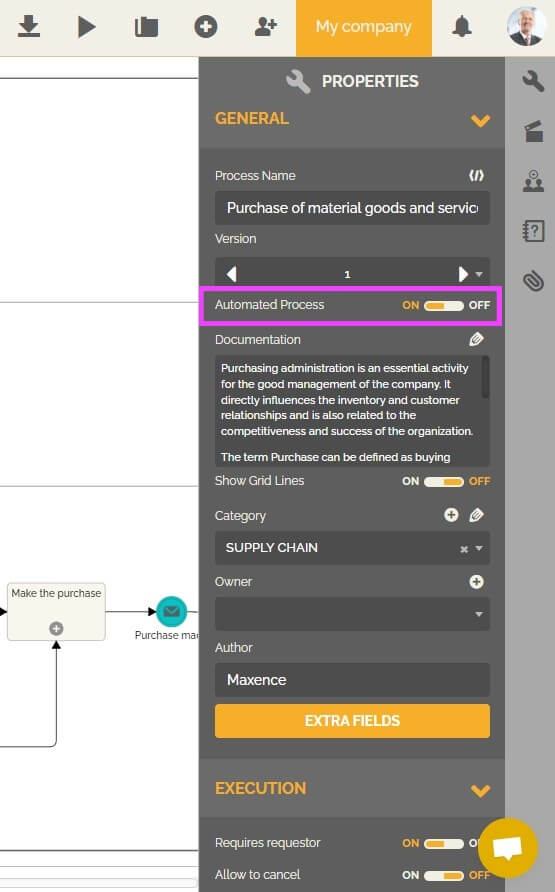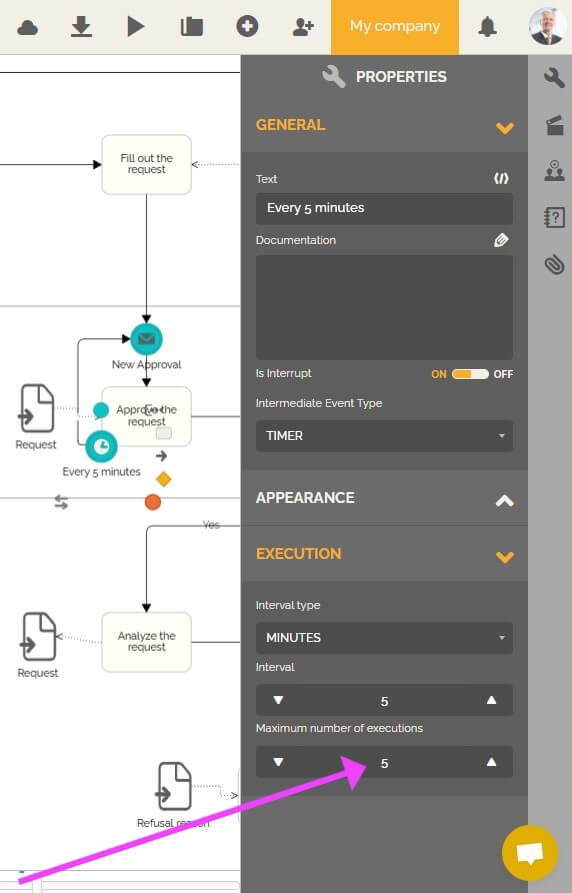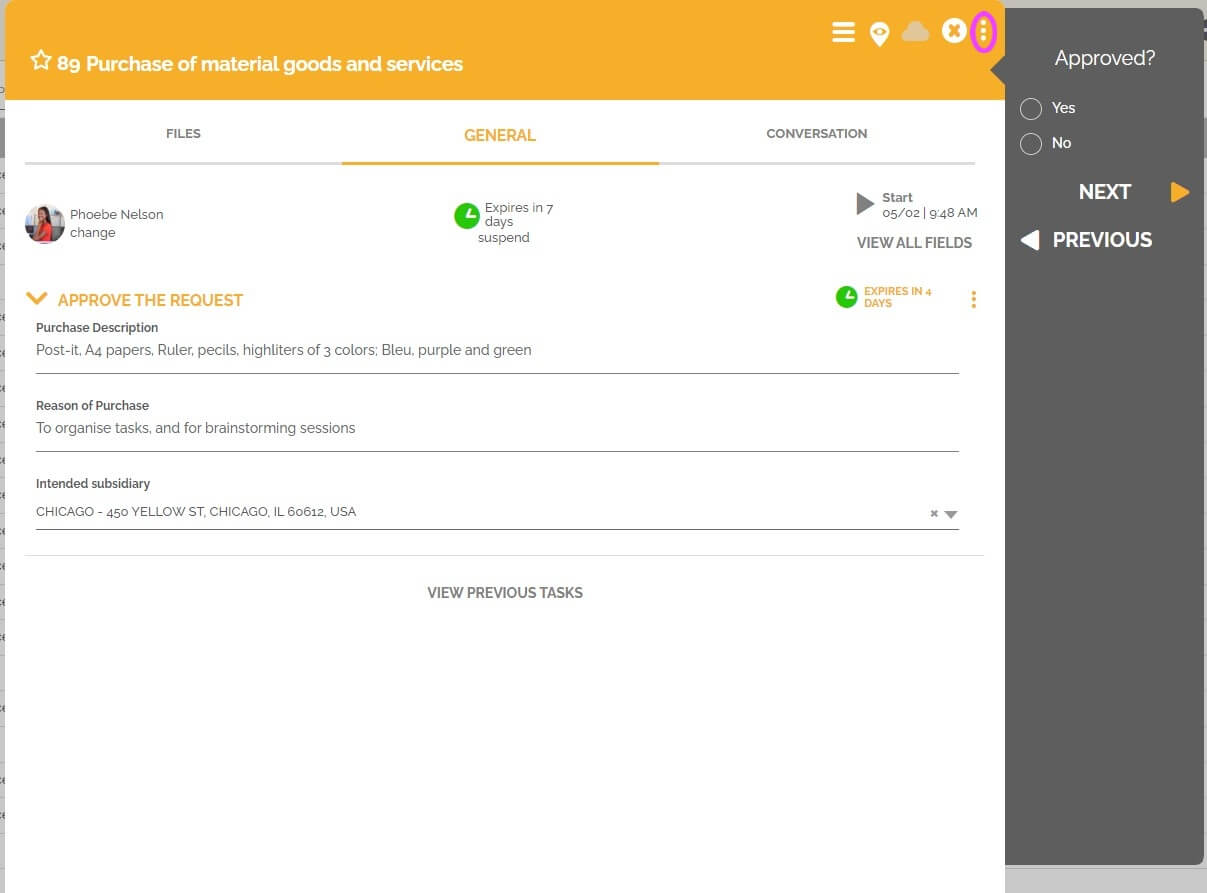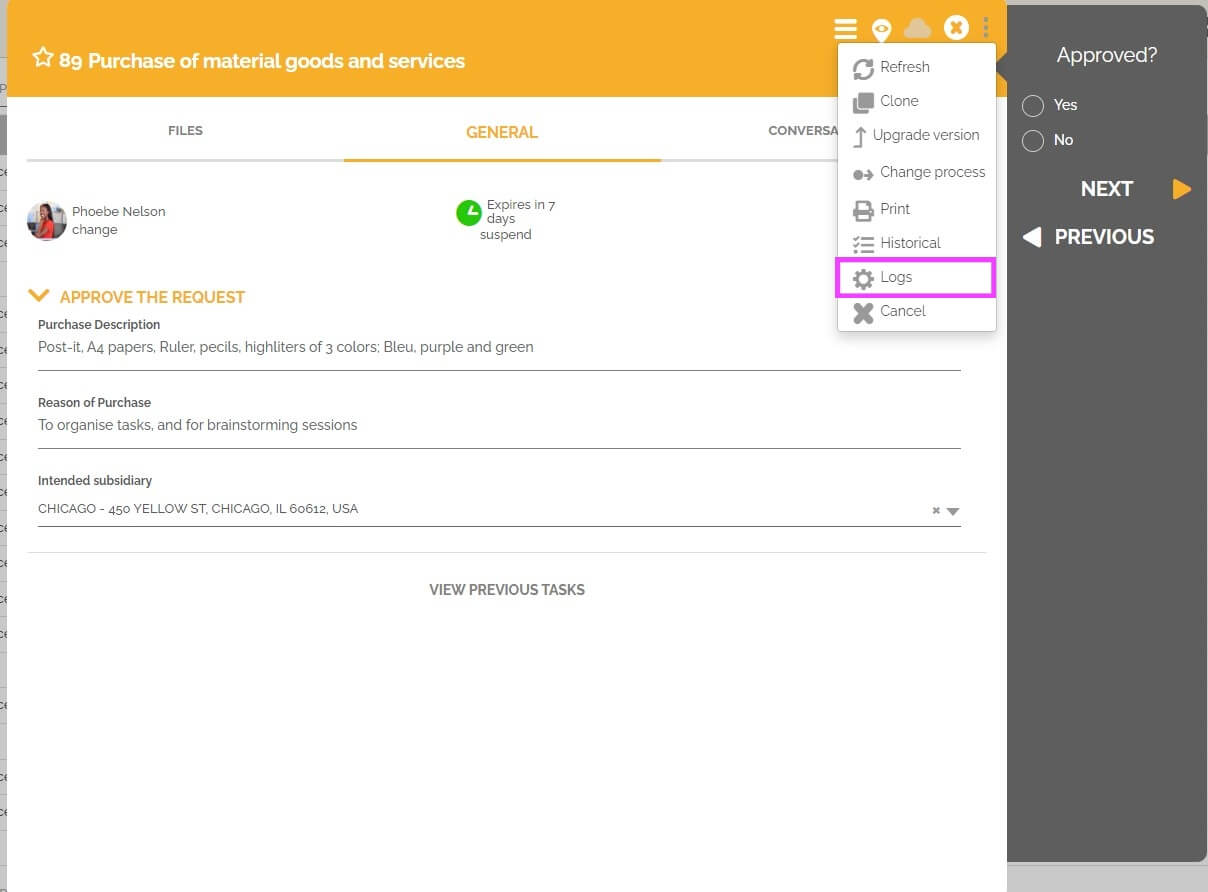You can give a process analyst or process editor user the ability to control the number of automatically triggered instance executions.
It is now mandatory to set the maximum number of executions when configuring a trigger boundary event.
This new functionality is available for events of type: timer or condition boundary events that have interrupt or non-interrupt behaviors.
The goal is to avoid an infinite loop if no action is taken.
To configure this:
- Enable process automation in the process editor.

- Click on the event you want to configure, then go to the properties tab.

- In the “execution” section, go to the “Maximum number of executions” field.
- Choose a number between 1 and 100 executions.

- Continue to model your process and then publish the automation.
From then on, the system will limit the number of repetitions of the boundary event execution to the specified number.
If the limit count is reached, then no such action will be triggered unless the work item flow returns to that task later in the process. In this case, the boundary event can be triggered again until the limit execution count is reached.
You can get additional information about the execution of the instance by clicking on the 3 dots icon

and clicking on “logs”.

In the “logs” tab, you have the detailed information of the different executions. This can correspond to an information, a warning or an error.

To learn more about intermediate boundary events: How to attach an intermediate event on a task
